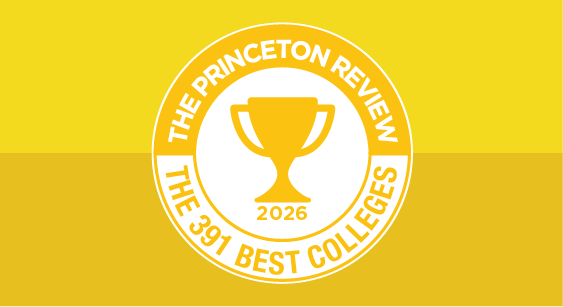
The AP ® U.S. History exam, also known as APUSH, is a college-level exam administered every year in May upon the completion of an Advanced Placement U.S. History course taken at your high school. If you score high enough, you could earn college credit!
Check out our AP U.S. History Guide for the essential info you need about the exam:
- AP U.S. History Exam Overview
- AP U.S. History Sections & Question Types
- AP U.S. History Scoring
- How to Prepare
What's on the AP U.S. History Exam?
The College Board requires your AP teacher to cover certain topics in the AP U.S. History course. As you complete your APUSH review, make sure you are familiar with the following topics:
- Period 1 (1491–1607) : Native American Societies Before European Contact; European Exploration in the Americas; Columbian Exchange, Spanish Exploration, and Conquest; Labor, Slavery, and Caste in the Spanish Colonial System; Cultural Interactions Between Europeans, Native Americans, and Africans
- Period 2 (1607–1754) : European Colonization; The Regions of British Colonies; Transatlantic Trade; Interactions Between American Indians and Europeans; Slavery in the British Colonies; Colonial Society and Culture
- Period 3 (1754–1800) : The Seven Years’ War (The French and Indian War); Taxation Without Representation; Philosophical Foundations of the American Revolution; The American Revolution; The Influence of Revolutionary Ideals; The Articles of Confederation; The Constitutional Convention and Debates over Ratification; The Constitution; Shaping a New Republic; Developing an American Identity; Movement in the Early Republic
- Period 4 (1800–1848) : The Rise of Political Parties and the Era of Jefferson; Politics and Regional Interests; America on the World Stage; Market Revolution: Industrialization; Market Revolution: Society and Culture; Expanding Democracy; Jackson and Federal Power; The Development of an American Culture; The Second Great Awakening; An Age of Reform; African Americans in the Early Republic; The Society of the South in the Early Republic
- Period 5 (1844–1877) : Manifest Destiny; The Mexican–American War; The Compromise of 1850; Sectional Conflict: Regional Differences; Failure of Compromise; Election of 1860 and Secession; Military Conflict in the Civil War; Government Policies During the Civil War; Reconstruction; Failure of Reconstruction
- Period 6 (1865–1898) : Westward Expansion: Economic Development; Westward Expansion: Social and Cultural Development; The “New South”; Technological Innovation; The Rise of Industrial Capitalism; Labor in the Gilded Age; Immigration and Migration in the Gilded Age; Responses to Immigration in the Gilded Age; Development of the Middle Class; Reform in the Gilded Age; Controversies over the Role of Government in the Gilded Age; Politics in the Gilded Age
- Period 7 (1890–1945) : Imperialism: Debates; The Spanish–American War; The Progressives; World War I: Military and Diplomacy; World War I: Home Front; 1920s: Innovations in Communication and Technology; 1920s: Cultural and Political Controversies; The Great Depression; The New Deal; Interwar Foreign Policy; World War II: Mobilization; World War II: Military; Postwar Diplomacy
- Period 8 (1945–1980) : The Cold War from 1945 to 1980; The Red Scare; Economy after 1945; Culture after 1945; Early Steps in the Civil Rights Movement (1940s and 1950s); America as a World Power; The Vietnam War; The Great Society; The African American Civil Rights Movement (1960s); The Civil Rights Movement Expands; Youth Culture of the 1960s; The Environment and Natural Resources from 1968 to 1980; Society in Transition
- Period 9 (1980–Present): Reagan and Conservatism; The End of the Cold War; A Changing Economy; Migration and Immigration in the 1990s and 2000s; Challenges of the 21 st Century
Sections & Question Types
The APUSH exam takes 3 hours and 15 minutes to complete and is comprised of two sections: a multiple-choice/short answer section and a a free response section. There are two parts to each section.
|
Timing |
Number of Questions |
Exam Weighting |
|
Section 1 |
Part A: 55 minutes |
55 multiple-choice questions |
40% |
|
Section 2 |
Part A: 60 minutes (including 15-minute reading period) |
1 document-based question |
25% |
APUSH Multiple Choice Questions
Questions are grouped into sets of three or four questions and based on a primary source, secondary source, or historical issue. Each set of questions is based on a different piece of source material. This section will test your ability to analyze and engage with the source materials while recalling what you already know about U.S. history.
APUSH Short Answer Questions
The three questions in this section will be tied to a primary source, historical argument, data or maps, or general propositions of U.S. history. Students are required to answer the first and second questions and then answer either the third or the fourth question. You are not required to develop and support a thesis statement, but you must describe examples of historical evidence relevant to the source or question.
APUSH Document-Based Question (DBQ)
The DBQ question requires you to answer a question based on seven primary source documents and your knowledge of the subject and time period. All the documents will pertain to a single subject. Students should develop an argument about the question and use the documents to support this argument.
APUSH Long Essay Question
For the long essay question, you’ll be given a choice of three essay options on the same theme, and you must choose one. You must develop and defend a relevant thesis, but there won’t be any documents on which you must base your response. Instead, you’ll need to draw upon your own knowledge of topics you learned in your AP U.S. History class.
For a comprehensive content review, check out our book, AP U.S. History Prep
What’s a good AP U.S. History Score?
AP scores are reported from 1 to 5. Colleges are generally looking for a 4 or 5 on the AP U.S. History exam, but some may grant credit for a 3. Here’s how students scored on the May 2020 test:
|
APUSH Score |
Meaning |
Percentage of Test Takers |
|
5 |
Extremely qualified |
10.8% |
|
4 |
Well qualified |
15.6% |
|
3 |
Qualified |
21.9% |
|
2 |
Possibly qualified |
23.0% |
|
1 |
No recommendation |
28.8% |
Source: College Board
How can I prepare?
AP classes are great, but for many students they’re not enough! For a thorough review of AP U.S. History content and strategy, pick the AP prep option that works best for your goals and learning style.
Read More
Explore Colleges For You
Connect with our featured colleges to find schools that both match your interests and are looking for students like you.
Get Started on Athletic Scholarships & Recruiting!
Join athletes who were discovered, recruited & often received scholarships after connecting with NCSA's 42,000 strong network of coaches.
Best 391 Colleges
170,000 students rate everything from their professors to their campus social scene.



